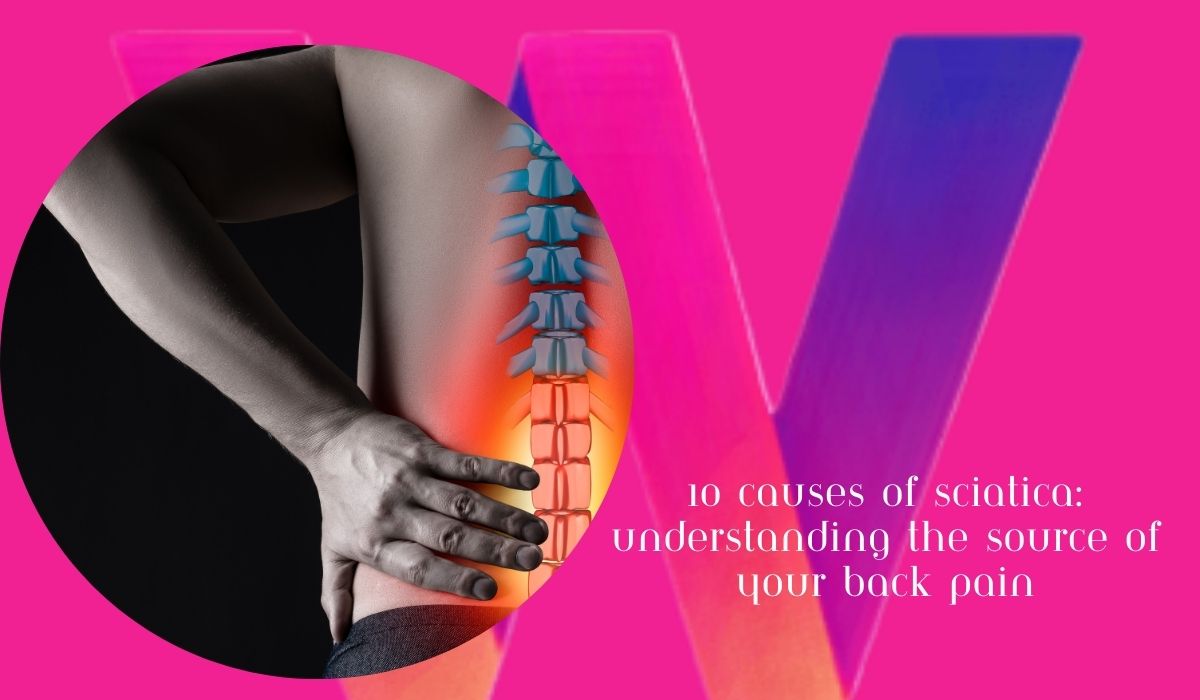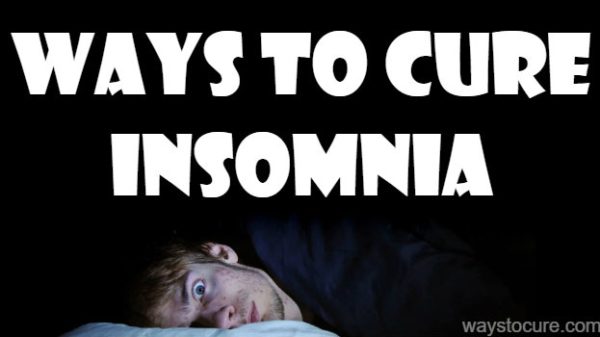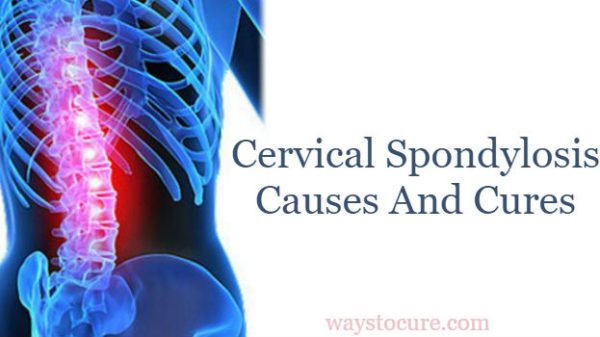Sciatica is a common condition that affects millions of people worldwide. It is characterized by pain, tingling, and numbness that radiates along the sciatic nerve, which runs from the lower back down to the legs. While sciatica can be debilitating, understanding its underlying causes is crucial for effective management and prevention. In this comprehensive article, we delve into the ten primary causes of sciatica, providing detailed insights and practical advice.
- Causes of Sciatica:
- What Is Acupuncture?
- Biofeedback Therapy for Sciatica: A Path to Pain Relief
- Conclusion:
Causes of Sciatica:
Herniated Discs:
Herniated discs, also known as slipped discs or ruptured discs, occur when the soft inner material (nucleus pulposus) of a spinal disc protrudes through the tough outer layer (annulus fibrosus). When this happens in the lumbar region, it can compress the sciatic nerve, leading to pain and discomfort. Proper lifting techniques, core strengthening exercises, and maintaining a healthy weight can help prevent herniated discs.
Spinal Stenosis:
Spinal stenosis refers to the narrowing of the spinal canal, which can put pressure on the sciatic nerve. This condition is often age-related and can cause pain, weakness, and difficulty walking. Physical therapy, gentle stretching, and anti-inflammatory medications are commonly used to manage spinal stenosis.
Piriformis Syndrome:
The piriformis muscle, located deep within the buttocks, can irritate the sciatic nerve when it becomes tight or spasms. This condition, known as piriformis syndrome, results in pain that radiates down the leg. Stretching exercises, massage, and avoiding prolonged sitting can alleviate symptoms.
Degenerative Disc Disease:
As we age, our spinal discs naturally degenerate. Degenerative disc disease can lead to disc height loss, instability, and nerve compression. Strengthening the core muscles, maintaining good posture, and staying active are essential for preventing and managing this condition.
Spondylolisthesis:
Spondylolisthesis occurs when one vertebra slips forward over another, causing spinal misalignment. This displacement can compress the sciatic nerve roots. Strengthening the back muscles, avoiding heavy lifting, and practicing good body mechanics are crucial for individuals with spondylolisthesis.
Trauma or Injury:
Accidents, falls, or sports-related injuries can damage the spine and lead to sciatica. Trauma-induced sciatica requires prompt medical attention. Rest, physical therapy, and pain management strategies are essential during the recovery process.
Tumors and Growths
Rarely, tumors or abnormal growths near the spine can compress the sciatic nerve. Early detection and appropriate treatment are crucial for managing sciatica caused by tumors. Consultation with a specialist is essential.
Pregnancy:
During pregnancy, hormonal changes and the growing uterus can put pressure on the sciatic nerve. Prenatal exercises, proper posture, and gentle stretches can help alleviate pregnancy-related sciatica.
Infections and Inflammation:
Infections (such as spinal epidural abscesses) and inflammatory conditions (like ankylosing spondylitis) can lead to sciatic nerve irritation. Timely diagnosis and targeted treatment are essential for preventing complications.
Lifestyle Factors:
Sedentary lifestyles, obesity, and poor posture contribute to sciatica. Regular exercise, maintaining a healthy weight, and practicing good ergonomics can reduce the risk of developing sciatic pain.
Home Remedies for Sciatica:
While medical interventions are essential for severe cases of sciatica, several home remedies can complement professional treatment. Here are some effective strategies:
a. Heat and Cold Therapy
- Apply a warm compress or heating pad to the affected area to relax tense muscles.
- Alternately, use an ice pack to reduce inflammation and numb the pain.
b. Stretching and Yoga
- Gentle stretching exercises can alleviate sciatic pain. Focus on hamstring stretches, piriformis stretches, and lower back stretches.
- Yoga poses that target the lower back and hips, such as the cat-cow stretch and pigeon pose, can provide relief.
c. Turmeric and Ginger
- Turmeric and ginger have natural anti-inflammatory properties. Incorporate them into your diet or consider taking supplements.
d. Epsom Salt Baths
- Soaking in warm Epsom salt baths can relax muscles and ease discomfort.
e. Maintain Proper Posture
- Avoid slouching or sitting for prolonged periods. Use lumbar support cushions if needed.
f. Massage and Acupressure
- Professional massages or self-massage techniques can promote relaxation and reduce muscle tension.
- Explore acupressure points related to sciatica relief.
Remember that home remedies should complement medical advice, not replace it. Consult with a healthcare professional to determine the most suitable approach for your specific condition. By combining these home remedies with expert guidance, you can effectively manage sciatica and improve your quality of life.
Acupuncture is an alternative treatment method commonly sought out by people struggling with sciatica, especially in cases of chronic sciatica. It carries fewer side effects and can provide similar or even improved pain relief relative to pain medications. Let’s explore this further:
What Is Acupuncture?
- Acupuncture involves the insertion of hair-thin needles into specific points on the body.
- These precise points correspond to energy pathways (meridians) that help balance the body’s energy flow.
How Can Acupuncture Alleviate Sciatica Pain?
- Acupuncture stimulates nerve fibers, promoting the release of endorphins (natural pain-relievers).
- It also enhances blood circulation, reduces inflammation, and relaxes tight muscles.
- By targeting the underlying imbalances, acupuncture aims to relieve sciatic pain.
How Effective Is Acupuncture in Relieving Sciatic Pain?
- Research suggests that acupuncture can be beneficial for sciatica.
- It may reduce pain intensity, improve function, and enhance overall well-being.
- However, individual responses vary, and more studies are needed for conclusive evidence.
What Are the Risks and Side Effects of Acupuncture?
- Acupuncture is generally safe when performed by trained practitioners.
- Rare risks include minor bleeding, bruising, or infection at needle insertion sites.
- Always choose a licensed acupuncturist for safety.
What Can You Do If Acupuncture Doesn’t Work for You?
- Consider other holistic treatments:
- Chiropractic adjustments: Restore spinal movement and decrease pain.
- Massage therapy: Loosen tight muscles in the back and hips.
- Yoga: Improve flexibility and promote relaxation.
- Herbal remedies: Explore natural anti-inflammatory options.
Understanding your unique needs and consulting a healthcare professional will guide your choice. Acupuncture, along with complementary approaches, can contribute to sciatica management and overall well-being.
Biofeedback Therapy for Sciatica: A Path to Pain Relief
Biofeedback therapy offers a promising alternative to traditional pain management options for the estimated 50 million Americans living with chronic pain. When it feels like your own body is working against you, biofeedback therapy empowers you to reclaim agency over it. Let’s explore how biofeedback can improve chronic pain, including sciatica.
Understanding Biofeedback
- Biofeedback involves using electrical sensors attached to your body to measure various functions related to your pain and its potential source.
- These measurements can include:
- Brain waves using electroencephalography (EEG)
- Breathing patterns using respiratory biofeedback
- Heart rate using electrocardiography (ECG)
- Muscle contractions using electromyography (EMG)
- Sweat gland activity using electrodermography (EDG)
- Body temperature using sensors
How Biofeedback Works
- Mindful Interventions: Biofeedback provides bodily insights that help you recognize and gain control over unconscious physical reactions triggered by stress and pain.
- Noninvasive Approach: It involves no medications and focuses on modifying involuntary responses.
- Example Scenario:
- An EMG session reveals a tight muscle that may be contributing to your pain or even causing it.
- Through multiple sessions, a biofeedback therapist teaches you techniques to relax that muscle.
- Observing how the muscle untenses in response to these relaxation techniques not only provides physical symptom relief but also a sense of agency over pain that previously felt uncontrollable.
Effectiveness of Biofeedback for Sciatica and Chronic Pain
- Chronic Back Pain: Biofeedback has been well studied and found to be effective for those with chronic back pain.
- Other Conditions: It has also shown promise in helping individuals with:
- Complex regional pain syndrome
- Temporomandibular joint pain (TMJ)
- Headaches
- Fibromyalgia
- Osteoarthritis
- Phantom limb pain
- Cancer-related pain
- Lupus-related pain
- Knee pain
- Whiplash
- Vulvar pain
Considerations and Resources
- Biofeedback therapy is safe when performed by trained practitioners.
- It complements medical advice and can be combined with other holistic treatments.
- Remember that individual responses may vary, and consulting a healthcare professional is essential for personalized guidance.
By harnessing the power of biofeedback, individuals can actively participate in managing their pain and improving their overall well-being.
Conclusion:
Understanding the ten causes of sciatica empowers individuals to take proactive steps in preventing and managing this condition. Whether through exercise, lifestyle modifications, or medical interventions, addressing the root cause is essential for long-term relief. Additionally, consider alternative therapies like acupuncture and biofeedback to complement conventional treatments. Remember that personalized guidance from healthcare professionals is crucial for effective sciatica management. By combining expert advice with home remedies and holistic approaches, you can improve your quality of life and regain control over your well-being.












